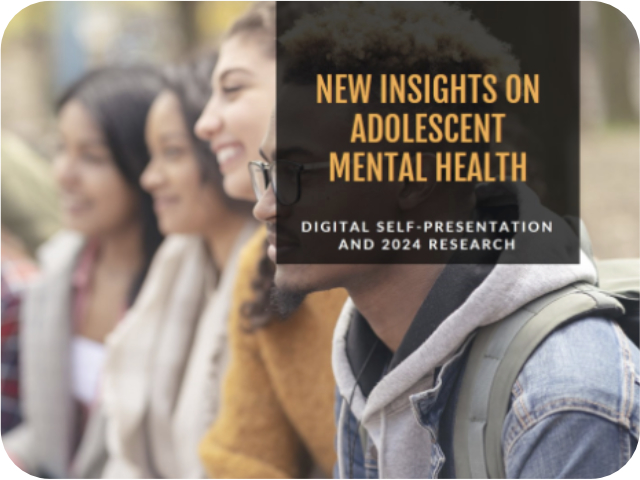A recent 2024 study published in BMC Public Health sheds light on how digital self-presentation on social media significantly impacts the mental health of adolescents. In a world where social media platforms like Instagram, TikTok, and Snapchat dominate, teenagers are increasingly engaged in strategic self-presentation—carefully crafting their online personas to appear more attractive, successful, or socially desirable. This curation of identity often involves what researchers call upward social comparison: comparing oneself to seemingly more successful peers or influencers.
Key Findings:
The study highlights that adolescents who frequently engage in these behaviors—seeking validation through likes and comments, and comparing themselves to others online—are more prone to mental health issues, particularly symptoms of anxiety and depression.
- Anxiety and Depression: The constant need to maintain a perfect image online leads to a cycle of stress and low self-worth. When teens receive fewer likes or positive comments than they expect, it amplifies feelings of rejection, leading to heightened anxiety. Over time, this can manifest in more serious symptoms of depression, especially as they internalize the perceived gap between their real and digital selves.
- Feedback-Seeking Behavior: The study points to the harmful effects of feedback-seeking behavior—where teens continually monitor their posts for validation. Teens who are overly concerned about feedback on their self-presentation experience greater pressure to conform to the unrealistic standards they see online. This not only increases feelings of inadequacy but also promotes a distorted self-image.
- Social Comparison: The research also found that upward social comparison—comparing oneself to peers or influencers who appear more successful, attractive, or socially accepted—contributes to low self-esteem and dissatisfaction with life. Adolescents who engage in these comparisons are more likely to feel that they do not measure up to the idealized versions of others they see online, further deteriorating their mental health.
- Excessive Social Media Use: The study categorized social media users based on how frequently they engaged with platforms. Those who used social media for long periods each day were shown to have the highest levels of depression and anxiety, as opposed to those who used it moderately or only occasionally.
Mental Health Implications:
The findings have significant implications for understanding the mental well-being of adolescents in today’s digital age. Social media use, while offering ways to connect, has introduced new forms of social pressure. The curation of digital identities, combined with a constant need for validation and comparison, puts teenagers in a precarious position. The pressure to maintain an ideal online persona is both mentally exhausting and unsustainable, often leaving teens feeling inadequate and distressed.
What Can Be Done:
The study underscores the importance of parental involvement and educational interventions. Parents and educators should help teens recognize the unrealistic nature of many social media portrayals and encourage healthier digital habits, such as limiting screen time and avoiding excessive engagement in social comparisons. Schools and mental health professionals can also play a role in educating adolescents on how to use social media mindfully, reducing its negative impact on their well-being.
Conclusion:
As social media continues to evolve, understanding its effects on adolescent mental health is more important than ever. The BMC Public Health study offers valuable insights into the psychological toll of self-presentation and social comparison online, urging us to take proactive steps in addressing these challenges for the sake of younger generations.
BMC Public Health. (2024). Digital self-presentation and adolescent mental health: Cross-sectional and longitudinal insights from the “LifeOnSoMe” study. BMC Public Health. Retrieved from https://bmcpublichealth.biomedcentral.com/articles/10.1186/s12889-023-16524-x

